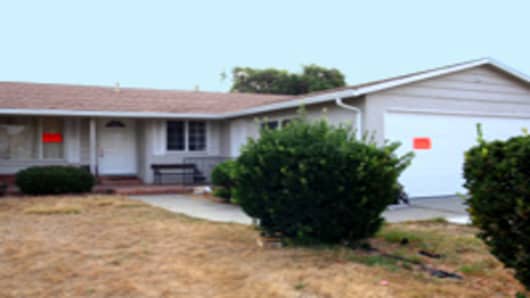Few things rattle a neighborhood like an abandoned home. Nearby homeowners worry about how such an unpleasant eyesore might bring down property values, create health hazards or invite crime.
If you live in a neighborhood that has an abandoned house, know your rights. Here are five rules to follow when trying to prevent a vacant home from damaging your community.
1. Research local land laws
Check out your community's codes regarding vacant homes.
"Every town or borough has ordinances that deal with abandoned property. The first step for a homeowner is to familiarize themselves with these laws," says Michael Baytoff, a Realtor with Pinnacle Realtors in Bedminster, N.J.
The ordinances are often very specific, with regulations for trash and yard cleanliness, peeling paint and broken windows.
They also address matters that could affect public safety, such as tree limbs on power lines, abandoned animals and deserted backyard pools that attract mosquitoes.
There may also be additional rules if the dwelling is part of a homeowners association, says Alan Jablonski, a consumer rights attorney in Long Beach, Calif., and author of "Successfully Navigating the Mortgage Maze."
"When a homeowner signs a contract with (a homeowners association), they're giving the association a lot of rights, and that association could force the maintenance of the property and bill the homeowner," he says.
_____________________________________
More Real Estate Stories From Bankrate.com:
_____________________________________
Many times, laws regarding vacant homes are available online at a local government Web site or at a local municipal building.
2. Check with the local municipality
If you think a home's condition is in violation of the law, contact the local municipality and ask them to fix the situation.
"Many times the ordinances are not automatically enforced, but if you know the ordinance, you can take this information to the zoning office to have it enforced," Baytoff says.
In Chesapeake, Va., inspectors are more likely to respond to homeowner complaints than to look for unreported violations, says John King, the city's zoning administrator.
"Once we receive a request, we do our initial inspections within two to three days," he says.
In describing how the process unfolds, King cites the example of a complaint of overgrown grass. After receiving such a complaint, King sends out an inspector to verify the violation.
If the infraction exists, the inspector places a sign on the property, contacts the problem homeowner and establishes a 10-day deadline to correct the problem.
If the homeowner doesn't address the problem within that time frame, the city hires a contractor to cut the grass within seven days. The city zoning office places a lien on the structure to cover the cost.
"The whole process would last about a month," King says.
"Counties are staying on top of these requests because they don't want them to pull down property values, which then reduce the amount of property taxes collected," says Ken Beasley, a real estate broker and owner of Equity Share Group in Danville, Calif.
Although zoning inspectors can resolve small issues, they usually are not authorized to handle major repairs without the homeowner's involvement, King says.
"We send out a notice of violation to owners, and if we don't get response, our only recourse is to issue a summons," he says.
At that point, the cases in Chesapeake typically can be resolved in court within 60 days. But in some instances, the case may drag on for a long time.
"If the summons can't be served -- when the owners have moved out of state, for example -- it can be indefinite," King says.


